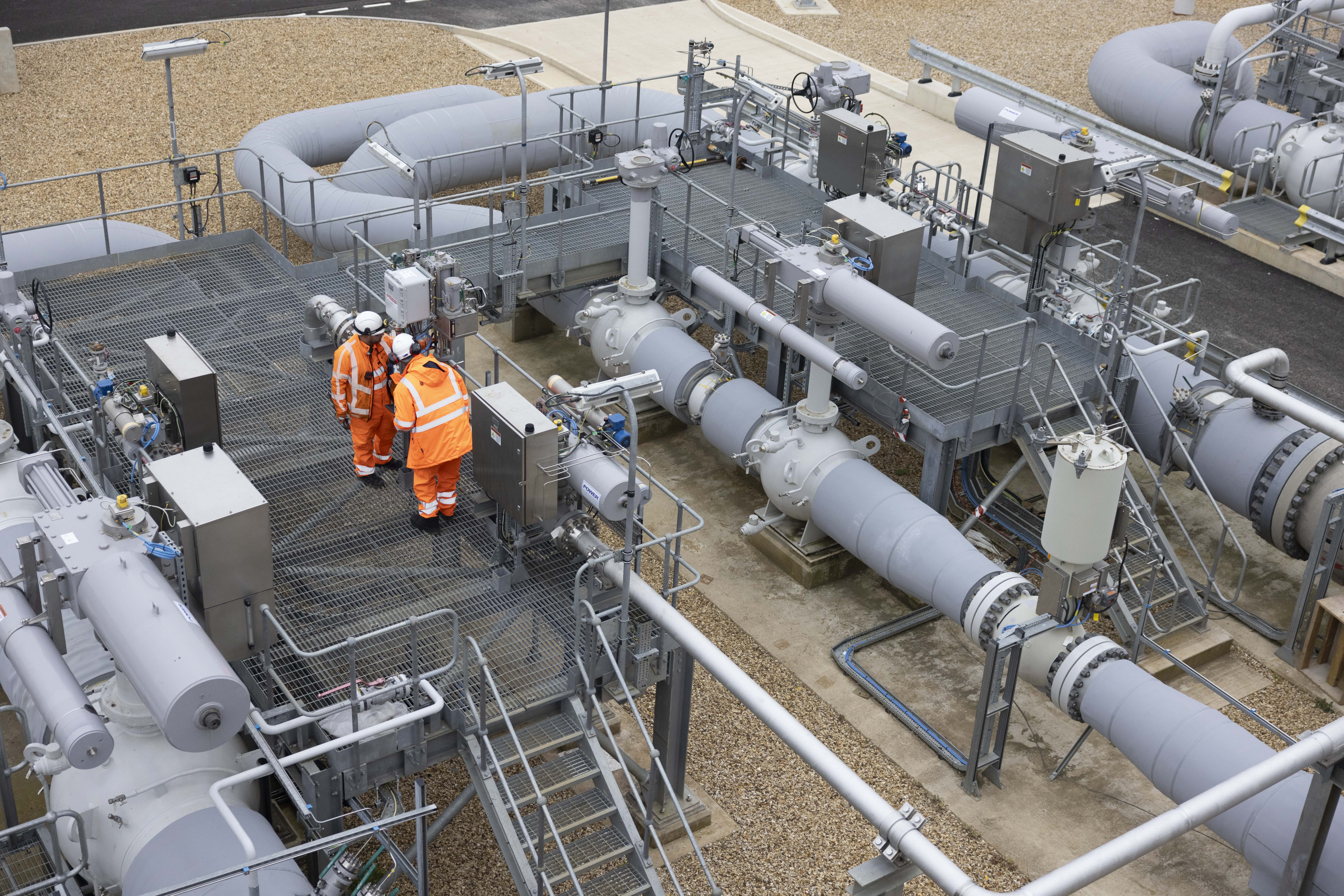HYDROGEN
Blending
National Gas is at the forefront of the UK’s transition to hydrogen. As well as creating a transmission network to transport 100% hydrogen (Project Union), we are also working towards blending hydrogen with natural gas within our National Transmission System (NTS).
Why blend hydrogen with natural gas?
Blending hydrogen with natural gas in the existing transmission network is the first step in building the hydrogen economy. It can provide the economic confidence needed for blue hydrogen production and support green hydrogen production by capturing renewable power that would otherwise be curtailed. It will also allow many hard-to-decarbonise industries to start using hydrogen as part of their transition to net zero.
As the European continent aims to blend hydrogen into its transmission system, our network – interconnected by our Bacton Gas Terminal in Norfolk – must remain interoperable with European networks. We are working closely with our European partners to ensure we can maintain security of supply into Great Britain via the gas interconnectors from Belgium and the Netherlands.
Testing programme for blended gas
The first crucial step is to understand the impacts on our infrastructure of transporting blended gas. While everything from our gas pipes to compressor stations were designed to transport and handle natural gas, many were also designed to be ‘hydrogen-ready’. We need to assess all of these assets to ensure they can transport blended gas safely, and to understand how blended gas affects their operation. We also need to understand the impacts on our suppliers, customers and how we manage and run a blended network.
Some of this work has already been completed and more work is underway.
NGT has previously commissioned a study on our direct connects ability to accept blends Hydrogen Acceptability Summary Report
Gas blending timelines
The process of moving the NTS to a blended network will likely be completed in phases, probably starting with a blend of 2% hydrogen to 98% natural gas. There are no firm timelines, and progress will require key political milestones to be reached before we move to the next phase. However, the EU is looking to introduce blended gas over the next couple of years.
As a result, National Gas is working closely with the UK government and Health and Safety Executive (HSE) to help them make an informed decision about whether to allow blended gas on the NTS – building on the strategic decision to support blending in the Gas Distribution Networks (GDNs). This includes sharing evidence gathered from our innovation projects – including test results from blended gas of between 2% and 20% hydrogen – and updating them on the progress made by our European counterparts.
Key milestones
- A decision on transmission blending is expected in 2024.
- The Health and Safety Executive (HSE) will need to approve the safety case for hydrogen blending.
- Legislative and licence changes will need to be implemented to enable a blended network.
Blending can begin once all these changes have been implemented.
Ongoing activity:
- FutureGrid has tested blended gases with a range of gas transmission assets. Initial results suggest that blending is possible within existing infrastructure.
- FutureGrid is undertaking further investigations on the compression and deblending of blended gas in transmission assets.
- Innovation projects are examining the characteristics of hydrogen blending and of our transmission infrastructure in relation to blending.

